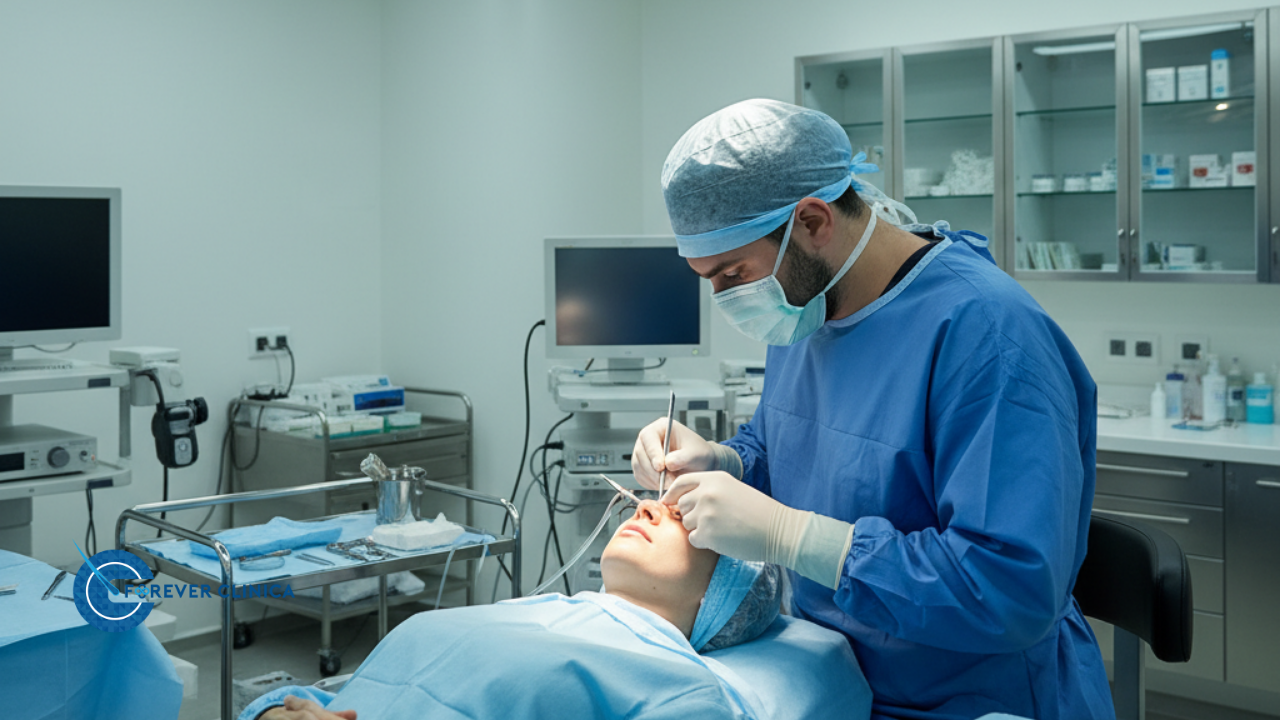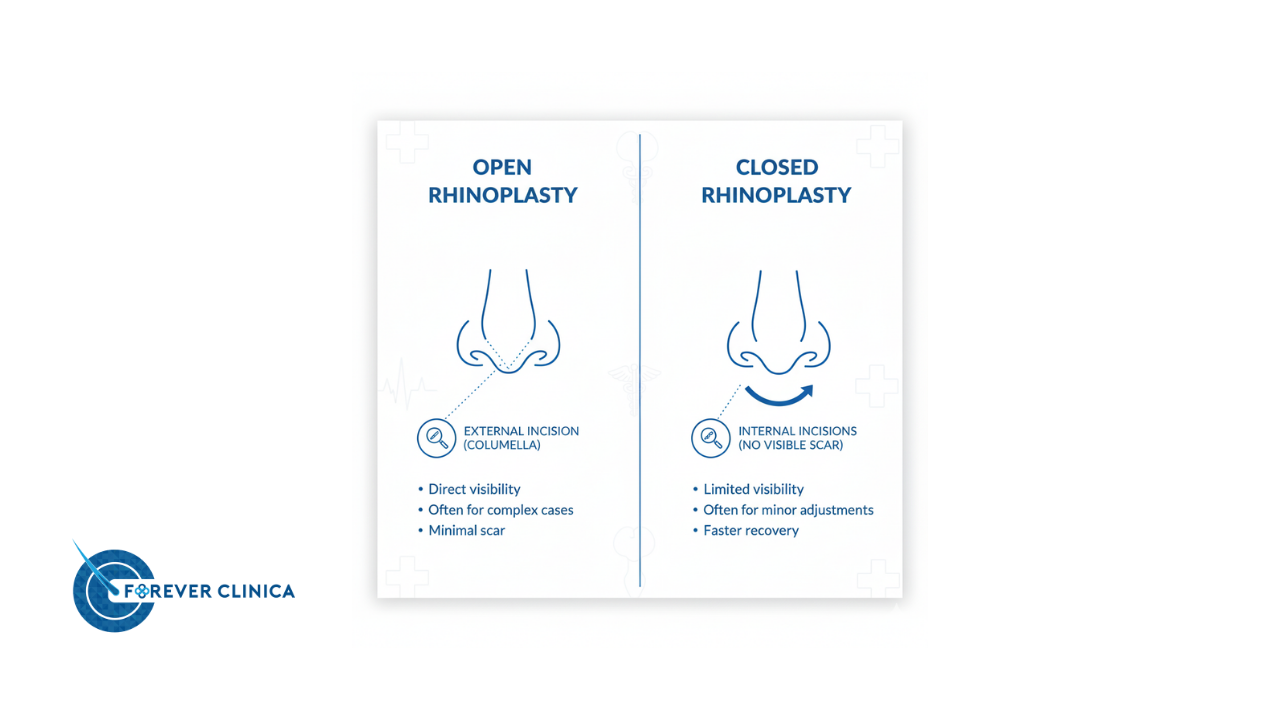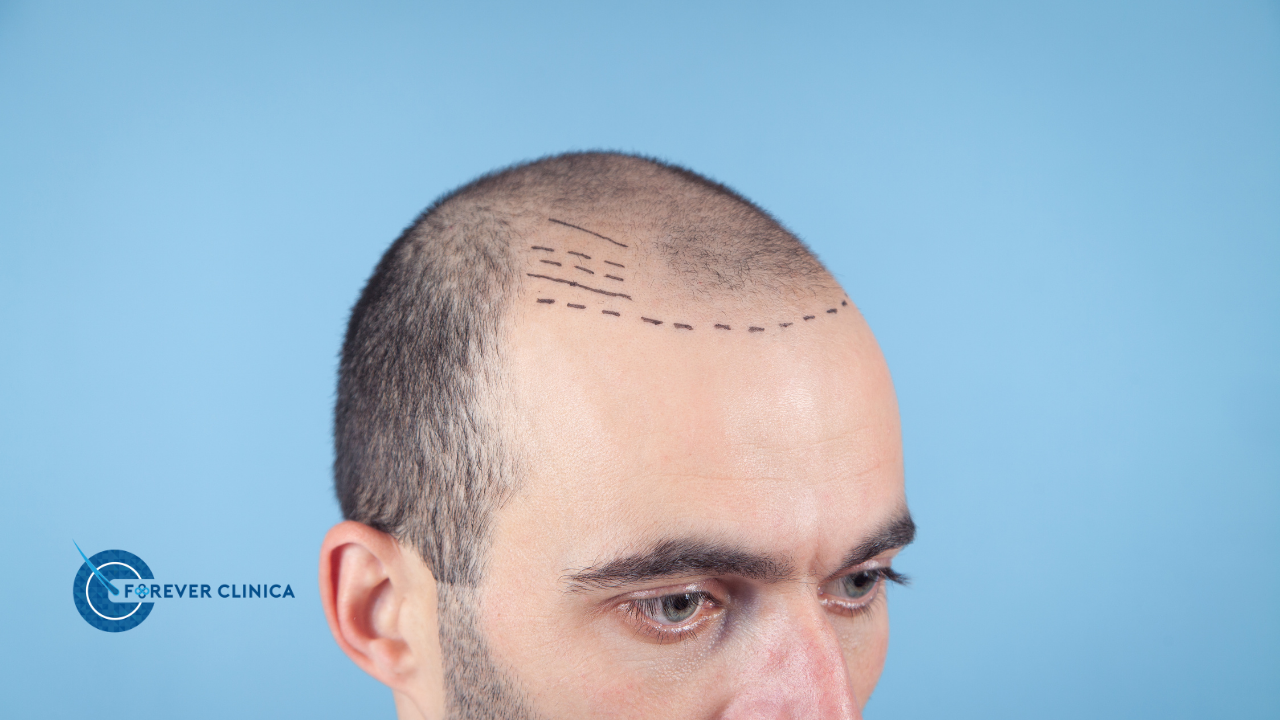💎 What Is Closed Rhinoplasty? The Modern Approach to Natural Nose Aesthetics in Istanbul, Turkey
Rhinoplasty — commonly known as a nose job — is one of the most transformative procedures in facial aesthetics. But in recent years, a new approach has gained exceptional popularity among both surgeons and patients: Closed Rhinoplasty.
Why? Because this innovative method offers scarless results, faster recovery, and a more natural appearance — all without any external incisions.
In this comprehensive guide, we’ll explain what closed rhinoplasty is, how it’s performed, how it differs from open rhinoplasty, and what to expect during recovery, all based on the professional experience of Forever Clinica’s expert surgeons in Istanbul, Turkey.
🔍 What Is Closed Rhinoplasty?
Closed rhinoplasty is a modern surgical technique used to reshape the nose without making any external cuts on the skin.
All incisions are made inside the nostrils, which means no visible scars after surgery.
The procedure can correct both aesthetic and functional issues — improving the shape, symmetry, and breathing of the nose in one operation.
In simple terms: closed rhinoplasty is a minimally invasive, scarless nose surgery that respects the natural anatomy of the nose while enhancing its overall harmony.
🧬 How Is Closed Rhinoplasty Performed?
Each nose is unique — in shape, thickness, and cartilage structure. That’s why closed rhinoplasty is always a personalized procedure, carefully tailored to the patient’s features.
1. Consultation & Planning
Your surgeon examines your nasal structure, skin type, and facial proportions. Using 3D simulation, they can preview possible results.
Together, you discuss your expectations and define a natural, balanced look that fits your face.
2. Anesthesia
Closed rhinoplasty is usually performed under general anesthesia, ensuring a completely pain-free experience.
3. The Surgery
Through tiny internal incisions inside the nostrils, the surgeon reshapes bone and cartilage.
Functional issues like septal deviation (crooked septum) can also be corrected during the same operation.
4. Closing & Recovery
Once reshaping is complete, all stitches remain inside the nose. A small silicone splint or cast may be placed to support the new shape.
🔄 Closed vs. Open Rhinoplasty — What’s the Difference?
The main difference lies in the incision location.
Feature | Closed Rhinoplasty | Open Rhinoplasty |
|---|---|---|
Incision | Inside the nostrils | On the columella (nose tip) |
Visible Scars | None | A very fine line may remain |
Swelling & Bruising | Less | Slightly more |
Healing Time | Faster | Longer |
Surgical View | Limited | Broader |
Both techniques have their strengths, but closed rhinoplasty is ideal for patients seeking natural results without visible scars.
👨⚕️ Advantages of Closed Rhinoplasty
Closed rhinoplasty is now considered a hallmark of modern aesthetic surgery — not only because of its visual outcomes but also due to its comfort and safety.
🌿 1. No Visible Scars
All incisions are made inside the nostrils, leaving the external skin untouched — a perfect choice for patients who prefer a completely natural look.
⏱️ 2. Faster Recovery
Less tissue trauma means less swelling and bruising. Most patients return to daily life within a week.
💨 3. Improved Breathing
This technique can also correct internal structural issues, helping patients breathe more easily after surgery.
🎯 4. Natural Results
Closed rhinoplasty preserves nasal support structures, ensuring the nose looks refined but not “operated on.”
🧖♀️ 5. Shorter Procedure
Typically completed within 1.5 to 2 hours, and most patients can go home the same day.
🧊 Recovery Process After Closed Rhinoplasty
Worried about recovery? You’ll be pleasantly surprised. With modern techniques used at Forever Clinica in Istanbul, recovery is smoother and faster than most expect.
Day | Process |
|---|---|
1–2 | Mild swelling and tightness — discomfort is minimal. |
3–5 | Silicone splints are removed — breathing improves. |
7 | External cast is taken off — shape becomes visible. |
10–15 | Bruising fades — you can return to social life. |
1 Month | Swelling continues to reduce significantly. |
6–12 Months | Final nose shape fully settles. |
Every patient heals differently. At Forever Clinica, our surgeons provide personalized follow-up care to ensure smooth healing and the best possible result.
⚖️ Who Is a Good Candidate for Closed Rhinoplasty?
Closed rhinoplasty is suitable for almost anyone, but it’s especially ideal for those who:
Want a natural improvement without visible scars
Have mild to moderate asymmetry or nasal hump
Have never had a nose surgery before (primary rhinoplasty)
Want to correct breathing problems alongside aesthetic concerns
For revision cases (second surgeries), your surgeon will determine whether an open or closed approach is more appropriate.
🧠 Key Facts About Closed Rhinoplasty
Duration: 1.5–2 hours
Anesthesia: General
Hospital Stay: 0–1 night
Recovery: 7–10 days
Full Results: 6–12 months
Scars: None (internal incisions only)
💬 Natural Results: Harmony Over Perfection
Every rhinoplasty is more than just an operation — it’s a form of artistic balance. The goal is not a “perfect” nose but one that looks harmonious with your face.
At Forever Clinica, our philosophy is simple: Your beauty should look like you — just more refined.
💡 Aftercare Tips for a Smooth Recovery
Avoid sleeping face-down for 7 days.
Refrain from wearing glasses for 3–4 weeks.
Protect your nose from the sun.
Avoid heavy exercise for 2 weeks.
Keep up with follow-up appointments with your surgeon.
❓ Frequently Asked Questions (FAQ)
1. Is closed rhinoplasty permanent?
Yes, the results are long-lasting and permanent. As swelling subsides, the nose continues to refine naturally.
2. Is it more difficult than open rhinoplasty?
It requires advanced surgical skill, as the visibility is limited. Choosing an experienced surgeon is essential.
3. Will I have trouble breathing after surgery?
Usually not — in fact, breathing often improves after internal corrections. Temporary congestion is normal.
4. How much does closed rhinoplasty cost in Istanbul?
Prices vary depending on the technique, surgeon’s experience, and clinical facilities. Forever Clinica offers personalized quotes after consultation.
5. Which is better — closed or open rhinoplasty?
Both can deliver excellent results. However, closed rhinoplasty is ideal for natural, scar-free transformations with faster healing.




